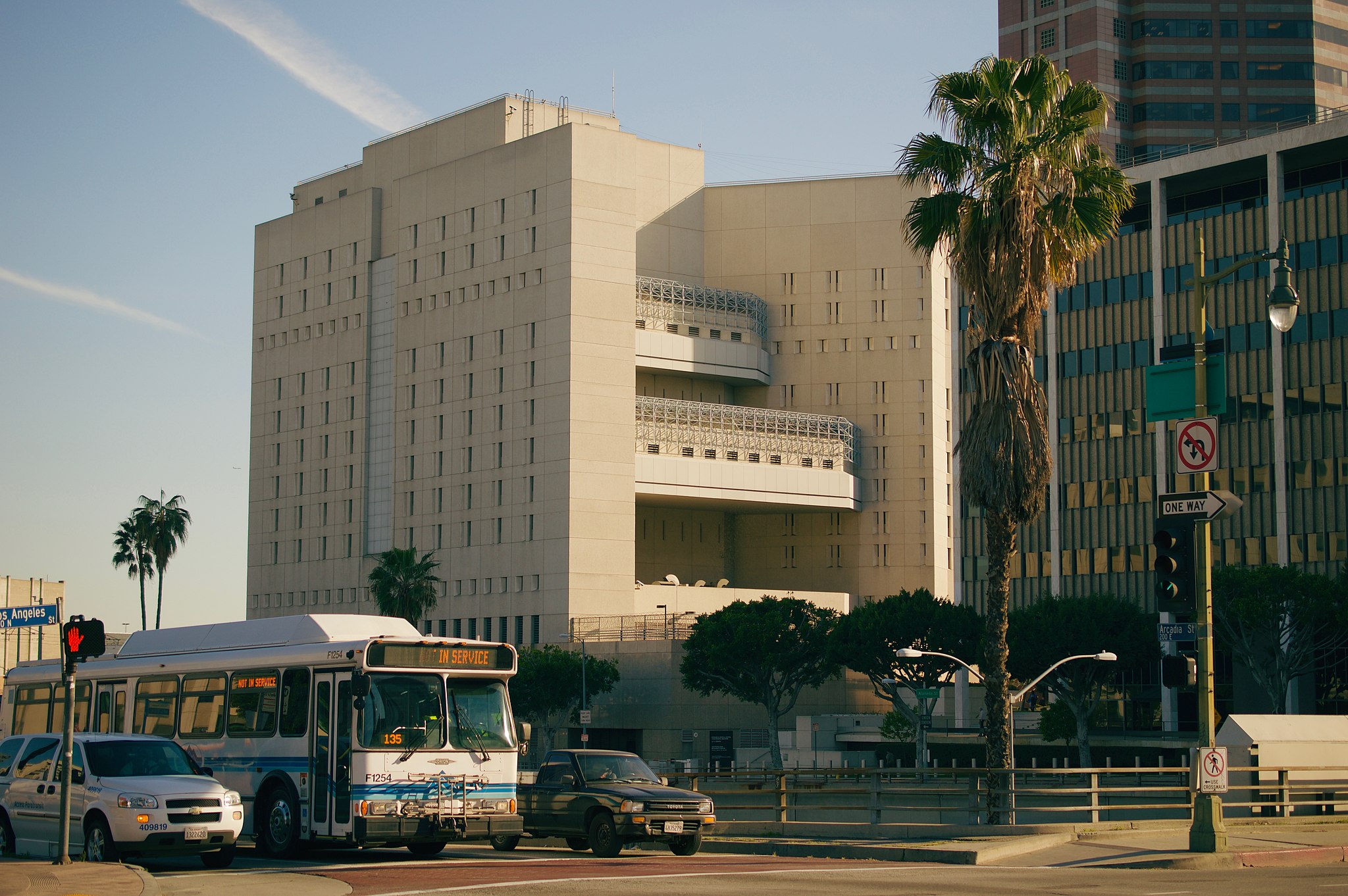Following injunction, LA County returns to pandemic-era $0 bail policy

Los Angeles County Jail is pictured. Cash bail will no longer be allowed for misdemeanors and nonviolent felony cases in LA County. (Wikimedia Commons photo by Levi Clancy)
By Sonia Wong
May 30, 2023 3:27 p.m.
This post was updated June 4 at 8:15 p.m.
Cash bail will no longer be allowed for misdemeanors and nonviolent felony cases in Los Angeles County after a judge’s preliminary injunction went into effect Wednesday.
With the preliminary injunction in place, LA County will return to the emergency bail schedule imposed during the COVID-19 pandemic, which set bail at $0 for misdemeanors and felonies, eliminating pretrial custody for these individuals.
The decision followed a class-action lawsuit regarding the jailing of individuals unable to pay bail before their arraignment. The ruling from the LA County Superior Court states that the civil rights attorneys who filed the lawsuit must find a suitable alternative 60 days from the injunction.
Prior to the preliminary injunction, bail was determined by law enforcement – whether it be immigration enforcement, police or other institutions – in accordance with the bail schedule set annually by a panel of California judges. That amount could be raised or lowered after arraignment, according to the LA Times. If unable to pay, one could pay a bail bond company 10% of their bail or otherwise remain behind bars, said to Leslie Bailey, director and senior attorney at Public Justice’s Debtors’ Prison Project.
According to the California Department of Insurance, a bail bond acts as a guarantee for an arrestee’s appearance at all court dates. When the bail bond is posted, an arrestee can be released from detention.
Isabelle Geczy, a pretrial justice fellow who works with the Bail Project and the UCLA School of Law, said the original measure was implemented during the pandemic to depopulate jails. Despite concerns that emergency bail measures would potentially lead to an increase in crime, there has been no significant rise during the months of its implementation, Geczy said.
Opponents of this policy have said that bail is important to ensure defendants appear in court and lower motivations for future crimes. For instance, Orange County Sheriff Don Barnes told the LA Times that, in 2020, 31% of those released on the COVID-19 emergency bail order in Orange County had committed new crimes.
There have been previous efforts to reduce bail, such as Proposition 25 and the decision for In re Humphrey, a case heard by the California Supreme Court in 2021. Proposition 25, which would have made pretrial cash bails unnecessary for most misdemeanors, was proposed on the 2020 ballot but failed to receive a majority vote. In 2021, the California Supreme Court ruled in its decision for In re Humphrey that unaffordable bail is unconstitutional and urged judges to consider one’s ability to pay when setting bail.
Geczy said this injunction was a positive step forward in pretrial detention in California and also nationwide.
“I think this injunction is a real moment where it’s definitely seen as a win,” Geczy said. “It’s a move towards eliminating wealth-based detention.”
Bailey added that the injunction is a first step to leveling the playing field for low-income populations. It also serves as an interim remedy while the attorneys on the case continue to fight for a more permanent alternative to money bail, Bailey said.
“No one is looking at each individual and assessing … whether there is public safety reason to keep them locked up,” Bailey said. “It’s purely like if you have enough money, you get out.”
Lex Steppling, a justice fellow at the Los Angeles Community Action Network, said the cost of bail in California is disproportionately high compared to other states, adding that this complicates how someone gets out of pretrial detention.
“There’s a tremendous amount of power that judges are given in the system to make as arbitrary a ruling as they want on a person and their body and their freedom,” Steppling said.
According to a report published by the Vera Institute of Justice, the median pretrial bail amount in LA County as of May was $235,000 and the average was $1,067,265, which is four times higher than the median of the New York City jail system. Bail amounts are also disproportionately higher for Black and Latinx people, according to the report.
Bailey said there are more effective ways than bail to encourage people to show up in court. She added that people may forget court dates or not have the transportation needed to get to court.
Geczy said pretrial detention is dangerous as it restricts access to medical and mental health care, and that there are more long-term consequences for the people jailed and their families.
“It also has a lot of collateral consequences for people in terms of threatening job security, in terms of impacting someone’s housing security,” Geczy said. “Even their ability to care for their kids or elders can also cause huge custody consequences.”
According to the Prison Policy Initiative, most jail suicides occur within the first week of admission. Most people are arraigned two days after arrest, but there are more people arraigned after five days than there are after one day, according to the declaration of Micah Clark Moody. This raises concerns that people who are unable to pay bail before arraignment are at higher risk of jail suicide.
Bailey said the long-term goal of the case is to build a system oriented toward care and services because of the unequal impacts the policy has on people of color and low-income populations. She added that this will help people connect to mental health services and housing placements.
“Those (pretrial) programs are not available to people as early as they should be and it takes a long time for people to get services,” Bailey said. “Our team is interested in learning as much as we can about what’s available, how much it costs, what we can do to help.”
Steppling said bail does not improve public safety and often just separates families.
“People being taken away from their families does not help make things safe in the community,” Steppling said. “If you can just pay your way out of jail, then what’s the point of jail?”
According to a report by the Prison Policy Initiative, places in the U.S. that adopted similar pretrial reforms saw arrest numbers, pretrial populations and overall prison populations decrease accordingly.
Steppling said it is important to understand and reform the prison system as a whole and that retribution as a form of punishment is not productive.
“We have to think beyond jails and beyond prisons. We have to accept that people deserve to be together,” Steppling said. “We have to understand that … accountability can’t exist when the state simply levies violence as a form of punishment.”

